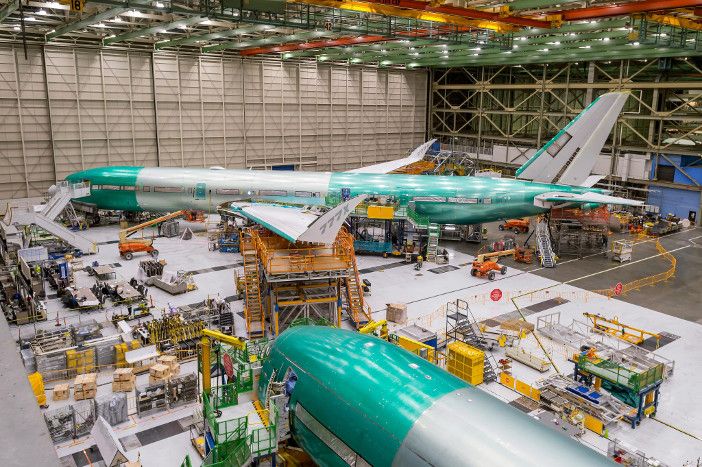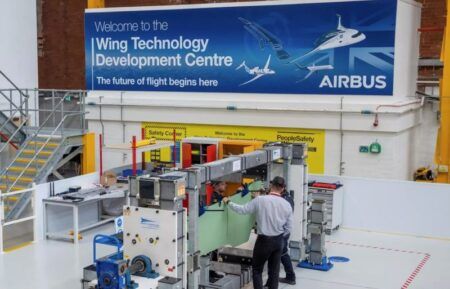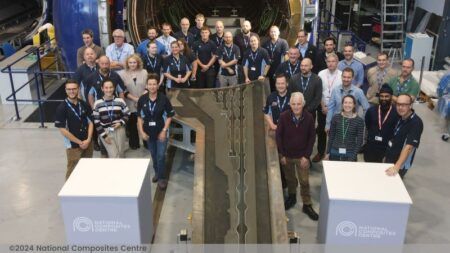Boeing last week confirmed that it is investigating an issue that occurred during final load testing of the 777X static test aircraft at its Everret plant in Seattle, Washington.
The final load testing, which was conducted earlier this month, involves bending the carbon composite wings of the 777X test aircraft upward to a level beyond that which it would experience in commercial service.
The static test aircraft used for the tests will never fly and is used to verify the design strength of the aircraft. The series of ground tests it undergoes uses weights, pulleys and cabin pressurization to create loads that can be many times greater than those the airframe will experience in the air.
The issue occurred during the final minutes of the test, at approximately 99% of the final test loads, and involved a depressurization of the aft fuselage, said Boeing.
Local media reported that the “issue” was one of the cargo doors of the test aircraft exploding outward. No one was hurt during the incident, which is controlled remotely and monitored using video cameras.
However, the issue is a further setback to Boeing’s 777X program, which is already facing a 12-month delay because of problems with the GE9X engines it is using. The aircraft’s first flight slipped from this year to 2020 earlier this year.
Boeing said, “The static airplane has been successfully undergoing testing since June, and this was the final test for the static test article. While our root cause assessment continues, at this time we do not expect that this will have a significant impact on aircraft design or on our overall test program schedule.
“We remain fully focused on safety as our highest priority, as we subject the 777X to a rigorous test program prior to first flight.”
The first 777X to be introduced will be the 777-9 model, which can seat 400 to 425 passengers in a standard configuration and offer a range of 7,600 nautical miles (14,075km).
The 777-8, which will seat between 350 and 375 passengers is expected to enter service a few years later.





